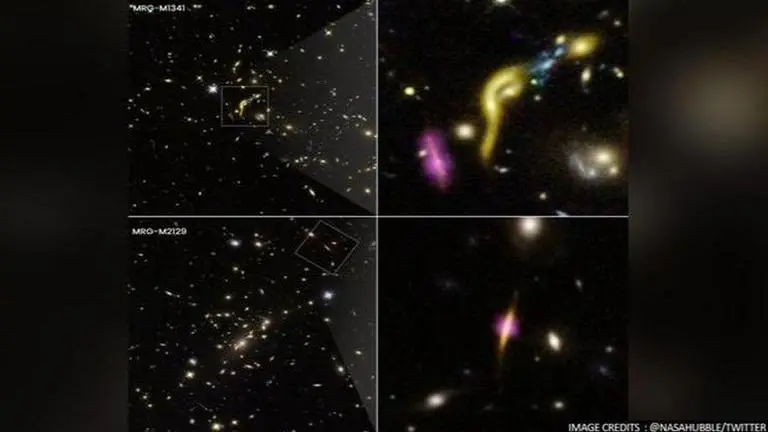Updated 23 September 2021 at 21:02 IST
NASA's Hubble uncovers six 'dead' galaxies from 11 billion years ago
NASA was able to capture this odd discovery after the Hubble and Chile-based ALMA scanned the sky directed towards the entities.
- Science News
- 2 min read

NASA’s Hubble Space Telescope has unearthed another mystery as it recently discovered not one but six “dead” galaxies. Galaxies are considered dead when they run out of hydrogen gas which is essential for star formation. NASA was able to capture this odd discovery after the Hubble and Chile-based Atacama Large Millimeter/submillimeter Array (ALMA) scanned the sky directed towards these cosmic objects.
Hubble found galaxies running on empty! ⛽
— Hubble (@NASAHubble) September 22, 2021
Astronomers discovered six massive, "dead" galaxies that had run out of the cold hydrogen gas needed to make stars.
Learn more about this unusual discovery: https://t.co/mkxgsfTuQ2 pic.twitter.com/TvFET61yfV
How did galaxies die?
The discovered entities ran out of hydrogen fuel just 3 billion years after the formation of the universe. According to NASA, this period was the peak of star formation and the most prolific in terms of star birth. Although the death of the six cosmic entities at such a young age is still a mystery, the agency said that these galaxies lived a “fast and furious” life and just in a remarkably shorter time, created their share of stars.
The experts also stated that the galaxies failed to rejuvenate even after merging with smaller galaxies and consuming their gas clouds. Experts speculate that after 11 billion years, these galaxies might have grown in scale but still won’t be producing any stars.
Kate Whitaker, assistant professor of astronomy at the University of Massachusetts, said that this discovery has sprouted several new theories about the emptied gas such as the formation of a black hole at the centre of the galaxy which heated all the hydrogen. Moreover, Whitaker also postulated that the gas might have been expelled from the galaxy and was denied reentry or could have simply run out of supplies.
Advertisement
Hubble’s discovery of galaxies
NASA’s famous telescope made the discovery under the REQUIEM programme, which is short for Resolving Quiescent Magnified Galaxies At High Redshift. The telescope in collaboration with ALMA, pin-pointed the galaxies using a method called "strong gravitational lensing." The agency explained that this method uses massive foreground galaxies as natural telescopes as galaxy clusters not too far away magnify the appearance of early, massive and distant galaxies by warping space.
The warped space also magnifies and bends the light coming from distant galaxies and presents astronomers with details that otherwise would’ve been impossible to see. According to NASA, it was this technique coupled with the collaboration of Hubble and ALMA that showed the galaxies as they were 11 billion years ago.
Advertisement
Image: Twitter/@NASAHubble
Published By : Harsh Vardhan
Published On: 23 September 2021 at 21:02 IST
